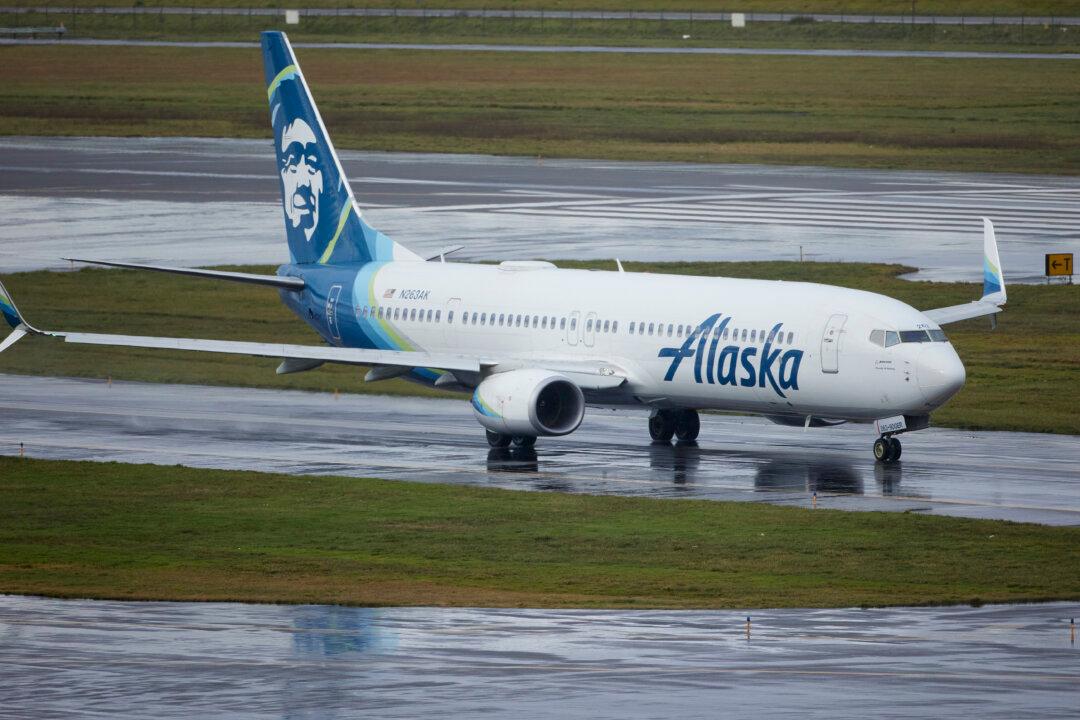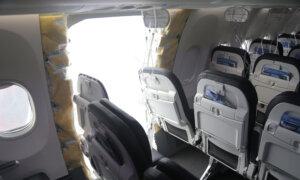The Federal Aviation Administration (FAA) is widening its probe into Boeing and will now look into the manufacturing practices of a subcontractor used by the planemaker, it has announced.
The probe is being expanded to include Boeing subcontractor Spirit AeroSystems, which is based in Wichita, Kansas, the FAA said in a Jan. 17 statement.
“After taking decisive action to ground 171 Boeing 737-9 MAX airplanes, the FAA is now investigating Boeing’s manufacturing practices and production lines, including those involving subcontractor Spirit AeroSystems, bolstering its oversight of Boeing, and examining potential system change,” the agency stated.
The company is cooperating with FAA investigators, Spirit spokesman Joe Buccino said.
Alaska Airlines Flight Blowout
Federal investigators have been probing aerospace giant Boeing in the wake of a midair blowout on a 737-9 MAX aircraft operated by Alaska Airlines on Jan. 5. The flight was en route to California from Portland International Airport in Oregon.During that incident, which occurred with 171 passengers and six crew members on board, a panel plugging an unused emergency exit door blew off shortly after the jet reached an altitude of about 16,000 feet.
The blowout, which left a gaping hole in the plane and saw a rapid loss of cabin pressure, resulted in an emergency landing back in Portland, although no one onboard was severely harmed.
That incident led the FAA to ground 171 Boeing 737-9 MAX airplanes worldwide while the agency conducts safety inspections of the plane.
On Jan. 12, the FAA stated that it would also begin auditing Boeing’s 737-9 MAX production line and its suppliers “to evaluate Boeing’s compliance with its approved quality procedures.”

Boeing, Spirit Increasing Safety Checks
The agency also announced increased monitoring of Boeing 737-9 MAX in-service events and an assessment of safety risks around delegated authority and quality oversight.“The grounding of the 737-9 and the multiple production-related issues identified in recent years require us to look at every option to reduce risk. The FAA is exploring the use of an independent third party to oversee Boeing’s inspections and its quality system,” FAA Administrator Mike Whitaker said at the time.
In a letter to employees on Jan. 16, Spirit AeroSystems CEO Pat Shanahan said the Boeing supplier will also roll out additional inspections of its 737 fuselage production line in the wake of the midair cabin blowout.
The company will use FAA safety management practices to guide manufacturing planning and audits going forward and issue visual instructions to employees to ensure limited chances of rework, he said.
As part of efforts to restore confidence in their manufacturing, Boeing and Spirit have said that they'll allow airline customers into their 737 production facilities to conduct their own inspections, Reuters reported.







